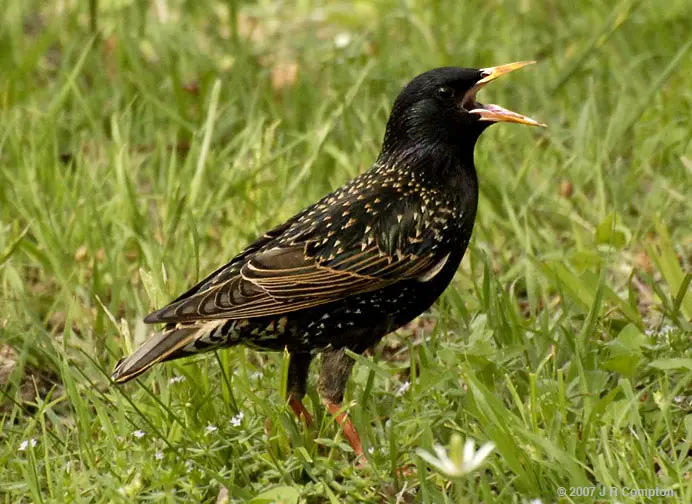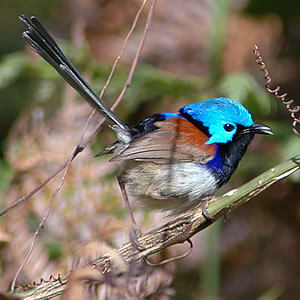European Starling
European Starling is one of the most common city birds. Large Starling groups circling around buildings is an impressive view that can observed in most parts of the world – they’re widespread all around Europe, Western Asia, as well as North America, South Africa and Australia. These birds have adapted to living in human populated territories and they are currently one of the most common birds in Europe.
European Starling is a very clever bird that easily gets used to living in new areas. In the last 50 years, when other bird species have been decreasing in population, the European Starling has become more widespread and their population has also grown. This bird reaches 22 cm in length and its wingspan is about 38 cm, while the plumage is black, with hints of green, purple and golden.
Although initially European Starling was a forest bird, nowadays they can more often be seen in cities. Starlings are social birds that look for food and rest in large groups and often nest in large colonies, too. These birds are so sympathized to cities because they are warmer and they provide cover from wind. They’re also often welcome guests in many human populated areas, because they catch bugs and insects and in New Zealand and post-soviet countries people even make special birdhouses for them.
The bird’s diet depends on its surroundings. In the wild, European Starlings feed on seeds and fruit, and catch bugs and insects in pastures. They are also often, but not very welcome guests in orchards and vineyards, and as many farmers know, large groups of Starlings can cause great damage to farmlands. Populations of these birds living in the cities often feed in the surrounding areas, most often pastures or fruit gardens, and then, in the evening, return in a large group to spend the night in the city.
When the nesting period comes, Starlings find a mating partner and search for proper places to construct a nest. Those specimen that live in forests, use tree cavities or cliff gaps, while city birds find places under rooftops or other similar places. The nest itself is rather large and made of various plants, feathers, and often many other materials they can find, for instance, paper and cloth. The hen lays 5-7 eggs, which hatch after twelve to thirteen days. The chicks develop fairly quickly, and they leave the nest already 3 weeks after hatching.
In some areas like large pastures, the Starlings are welcome guests because they rid the area of insects and mosquitoes, while fruit growers will do anything to get rid of these birds. Being great imitators, the European Starlings sometimes entertain people in the cities by singing a phone melody or a song. Due to their great adaptation skills, the population of European Starlings is increasing and this species is currently not endangered.




